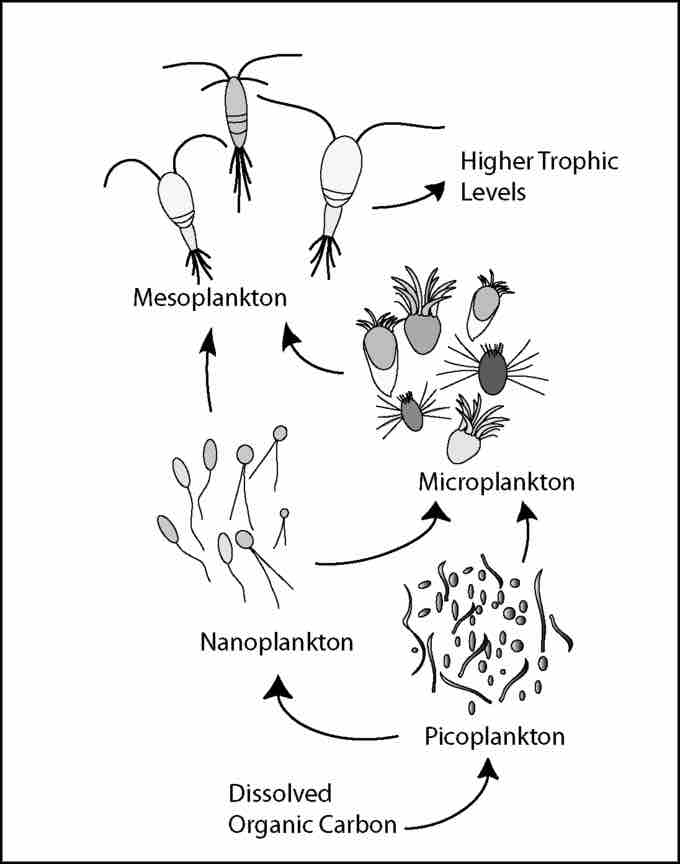Gas vesicles are spindle-shaped structures found in some planktonic bacteria that provides buoyancy to these cells by decreasing their overall cell density . Positive buoyancy is needed to keep the cells in the upper reaches of the water column, so that they can continue to perform photosynthesis. They are made up of a shell of protein that has a highly hydrophobic inner surface, making it impermeable to water (and stopping water vapor from condensing inside), but permeable to most gases. Because the gas vesicle is a hollow cylinder, it is liable to collapse when the surrounding pressure becomes too great.

Illustration of a microbial loop
Gas vesicles provide bouyancy for some planktonic bacteria by decreasing their overall cell density.
Natural selection has fine-tuned the structure of the gas vesicle to maximize its resistance to buckling by including an external strengthening protein, GvpC, rather like the green thread in a braided hosepipe. There is a simple relationship between the diameter of the gas vesicle and pressure at which it will collapse - the wider the gas vesicle the weaker it becomes. However, wider gas vesicles are more efficient. They provide more buoyancy per unit of protein than narrow gas vesicles. Different species produce gas vesicles of different diameters, allowing them to colonize different depths of the water column (fast growing, highly competitive species with wide gas vesicles in the top most layers; slow growing, dark-adapted, species with strong narrow gas vesicles in the deeper layers). The diameter of the gas vesicle will also help determine which species survive in different bodies of water. Deep lakes that experience winter mixing will expose the cells to the hydrostatic pressure generated by the full water column. This will select for species with narrower, stronger gas vesicles.